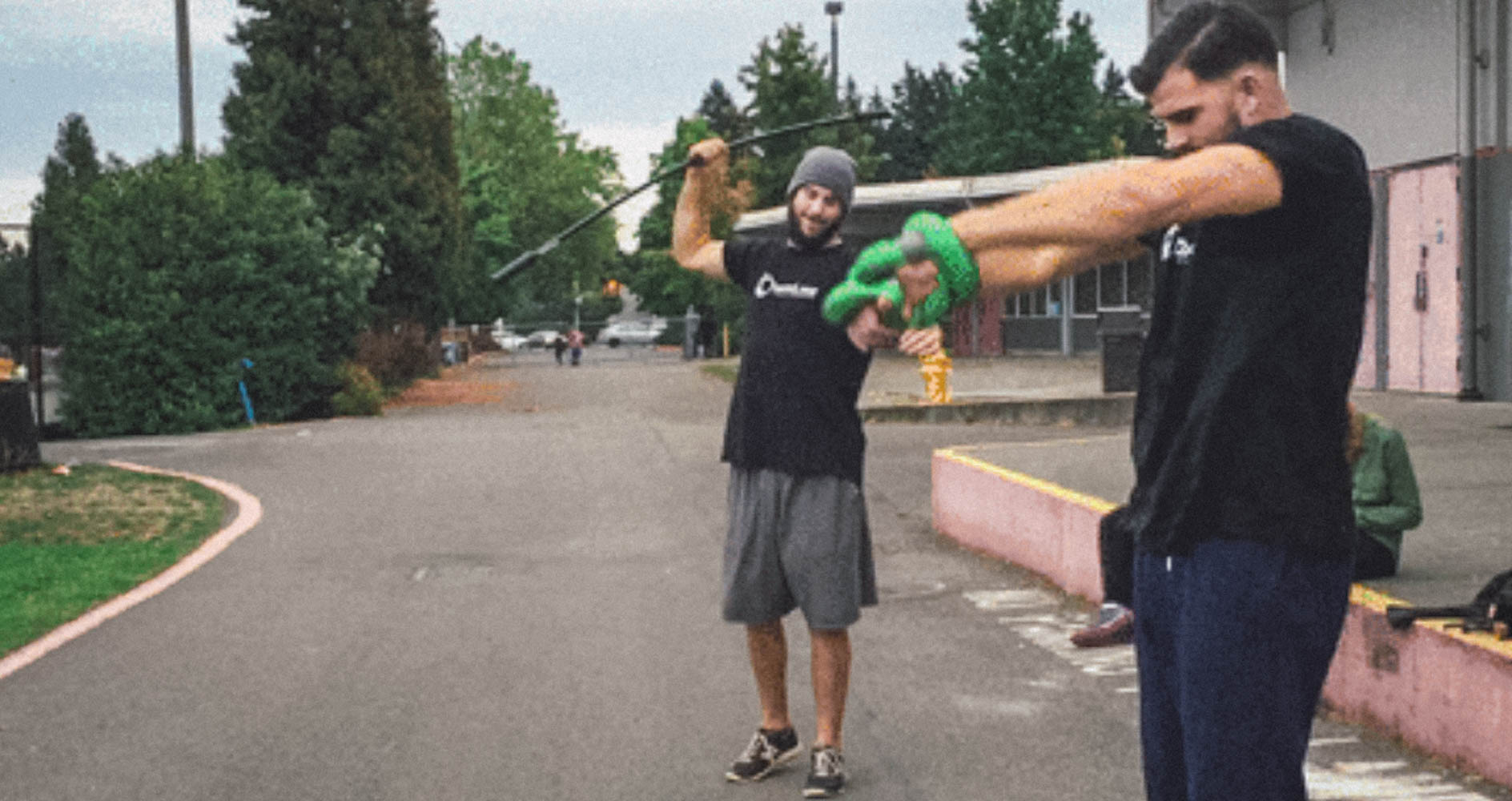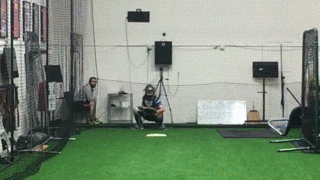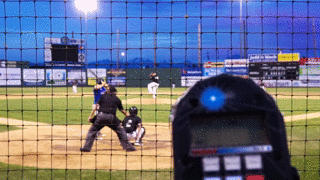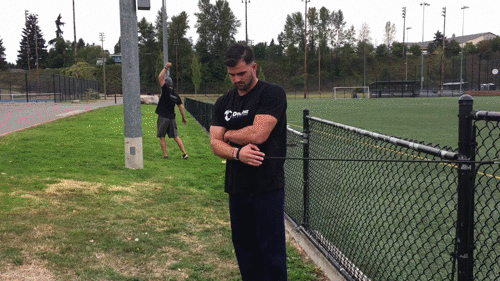Why Developing a Training and Pitching Routine Matters

When you’re a rookie-ball strength and conditioning coach – as I was during my time in professional baseball – you work with many young players. But, this is not at the exclusion of other players, as you’re also afforded the opportunity to see and interact with players of all ages and skill levels, as minor league spring training encompasses the majority of the farm system, and extended spring training often plays host to many higher-level ballplayers during their rehabilitation process. I’ve even been fortunate enough to spend some time with big league players.
Throughout my handful of seasons, I made sure to watch a lot. I not only like to watch them play, but more importantly, I always enjoyed observing them prepare. Through my observations it didn’t take long to figure out one of the greatest discrepancies between those in rookie-ball and those playing at higher levels. It wasn’t usually talent, but preparation.
I also have been able to spend some time at the collegiate level – not so much on the field, but quite a bit in the weight room. And, I have accumulated many years of coaching at the high school level, both on and off of the field. While skill is to a much greater extent than pro ball a great differentiator at the amateur level, routines still make a great deal of impact at this level and can become a major differentiator, even if it be for different reasons.
Today we will discuss the overall importance of pitchers developing a solid routine for preparation.
At the Professional Level
To see the greatest significance of preparation routines, we must start at the highest level – professional baseball.
When walking into extended spring training, you might be surprised to find how similar it looks to spring training itself. Aside from the lack of fanfare, there is not a whole lot different. When it comes to the look and performance qualities of the pitchers, there are more similarities than you would initially expect.
For starters, the pitchers practicing on a back field during extended spring training or on the rookie-ball squad don’t appear all that different in size. They will generally carry the frame and stature as any other caliber of pitcher in professional baseball.
Their “stuff” won’t appear to be a whole lot different either. You will still see 95-100 mph arms at times, and you’ll certainly see some filthy off-speed. Of course, you will surely see some inconsistencies as well. Sometimes there will be a lack of command, less eye-catching velocity or movement too. But, the disparity won’t be as obvious as you’d think.
What will really stand out if you watch long enough – perhaps after watching for a day or two – is the difference in the level of preparation, as well as its consistency over time.
This isn’t to say that all rookie-ball or lower-level players don’t prepare well – that is not what I am getting at. Rather, it is just a general observation of the populations that I’ve worked with. Ultimately it is the players at the lower levels of professional baseball who not only need skill development, but personal and professional development when it comes to their between-game and practice routines.
Where the big league pitcher generally knows exactly what he will do each and every minute leading up to first pitch on his day of the rotation, or each and every day leading up to his start, the younger pitcher in his first years of professional baseball may still walk into the clubhouse on his night to pitch with ice cream and soda, or may neglect to properly warm-up for a lifting session.
While performance and ability may hold a professional pitcher back from jumping up the ranks, it may be the routines (or lack there of) that are at the root of the problem. Failure to prepare on a daily and weekly basis with solid and consistent routines can lend itself to inconsistent performance results, especially as the seasons get longer. If a pitcher cannot sustain strong performances on a weekly basis during the rookie-ball season (which only lasts from June until September) what would make their chances any better when the season still ends in September, but instead begins in April (as is the case for the affiliates above rookie-ball)?
Whether it is a lack of understanding, a lack of want-to, or simply a relative inexperience with developing routines, inconsistent preparation can make a major impact on performance in professional baseball.
At the High School Level
In amateur baseball skill level certainly matters, and it matters a lot. A 90 mph arm with one good off-speed pitch can certainly dominate a given high school line-up so long as it is relatively consistent. Talent is a major separator at the high school level, there is no denying that.
But, in addition to skill and ability, routines and preparation can still make a major difference to the high school player. This isn’t necessarily because the player needs them to be ready to pitch, as the high school season is exponentially less demanding than the professional season. Rather, it is because solid and consistent routines and preparation at the high school level lend themselves to greater improvements in practice and training.
The best training program in the world won’t do a whole lot of good to the player who only complies with it whenever he feels like it. Likewise, great coaching can only help a player as much as they are willing to utilize it and apply it in practice.
Thus, committing to preparation is a must for any players series about improving their pitching performance. Routines serve as the vehicle to do this.
By making preparation routine – a routine that is not only manageable, but also one that the player enjoys and leans on – the player can be assured that they are always in the best position to progress and develop.
Developing a Routine
A high school pitcher cannot be expected to have an elite-level routine. They may not even have a consistent routine at first.
At the high school level the goal should be to experiment and tinker in order to find what works best for them. From lifting, to nutrition, sleep, recovery, and warm-ups, the high school pitcher should spend the ages of approximately 14 to 18 years learning what they like, what they don’t like, how their body is affected by training and performance, and what helps them respond to both most effectively.
Then, as the player progresses to the next level – whether that be collegiate or professional baseball – they can use this knowledge to help mold a routine that will withstand a much more demanding schedule of practice and games. And, this routine will no longer serve as just a vehicle for improved performance, but also recovery in between outings over the course of progressively longer seasons.
***
While age and experience can dictate a lot of what a pitcher can and can’t do on the field in terms of performance, and in the weight room in terms of training methods, they certainly should not discourage a pitcher from learning more about themselves.
As a pitcher ages and progresses through their high school career, it is vital that they work hard to find out what training and preparation routines work best and help them accomplish their own personal goals, both in the short term and long term.
This knowledge of and experience with routine-development will then help the pitcher withstand more grueling and demanding seasons as they age. It will also inevitably serve as a major differentiator between themselves and other pitchers at the collegiate and professional levels should they reach them.
Want to learn more about strength training as it relates to being a better pitcher? Read all of our articles relating to strength here.
Comment section
Add a Comment
You must be logged in to post a comment.




STUFF PITCHERS SHOULD READ | Tom Oldham Baseball -
[…] Why Developing a Training and a Pitching Routine Matters (by Ryan Faer, Driveline Baseball) […]